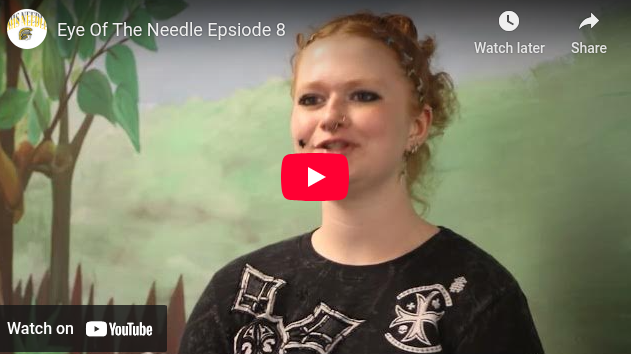Dealing with Eating Disorders
An estimated 11% of high school students have been diagnosed with an eating disorder.
Sophomore Charlotte Saluk holds up the sophomore’s homecoming poster with some of her friends.
December 11, 2020
Trigger warning: Discussion of eating disorders and body image.
An estimated 11% of high school students have been diagnosed with an eating disorder according to The Recovery Villiage, and an approximated 30 million Americans suffer from some form of an eating disorder. While there are many different types of eating disorders, the most common in the U.S. is binge eating disorder, bulimia nervosa, and anorexia nervosa.
According to the National Institute of Mental Health, eating disorders tend to be more prevalent in women rather than men. However, this doesn’t mean that men don’t struggle with their body image. 10 million American men will suffer from an eating disorder at some point in their life. This can stem from disordered eating habits and muscle dysmorphia, an obsession with becoming more muscular.
Sophomore Charlotte Saluk said her experience with eating disorders “was a long time coming.” For Saluk, it began in middle school. “I was not in a very good group of friends. They were very judgemental and would constantly leave me out,” Saluk said. She said it started out as just dieting.
“It first started out as anorexia, where I just wouldn’t eat,” Saluk said. “I had bulimia, with anorexic tendencies.” She said anxiety and depression were the main factors in the decline of her mental health. At the end of seventh grade, Saluk started going to therapy. Her therapist was the one to diagnose her with bulimia nervosa. “I told my mom first and I waited to tell my dad for another week because I was just scared,” said Saluk.
To begin her recovery, Saluk would go to therapy twice a week. She said, “It just kept getting worse and worse.” Her therapist recommended that she go to a treatment program. Saluk began treatment at a facility in Omaha, Nebraska. “I did a PHP, which is a partial hospitalization program, where there are different levels of care for eating disorders,” Saluk said. Saluk was at the facility for 3 weeks and would stay at the facility during the day, and go to a place called the rainbow house to stay the night. Saluk said her mom was a big part of her recovery. “You need to remember how far you’ve come. The fact that I came from being someone that couldn’t eat anything without throwing it up to you know, being completely clean for six months,” she said.
There are outlets and hotlines that can help students if they are struggling with their self-image or eating disorders. Guidance counselors Alyssa Dovenspike and Sarah Rose are also here to help any student that may need it. There are the SAP services that are on call, which facilitate referrals to help students with long term care for free. Their number is 800-327-4692. There is also a NAMI hotline you can call at 800-950-6264, or text 741-741. Rose mentioned some things to watch out for in your friends or yourself, “Journaling food intake or calorie intake is a big one if your friends are doing that. Worried about mirrors, constantly talking about how ugly they are.” If you need help you can stop by guidance to talk to Dovenspike or Rose, or use the SAP hotline.










